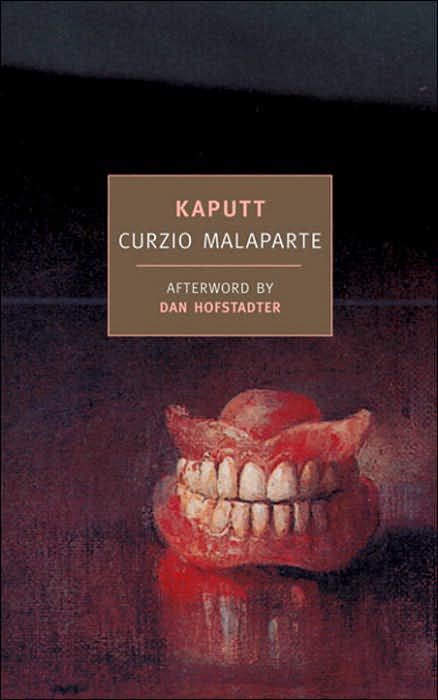
Kaputt: The Mice

Sartori stood facing the car, his face raised and wiped his sweat with a handkerchief. Suddenly the door yielded and the [train] car was opened. A throng of prisoners hurled itself at Sartori, knocking him down and falling on top of him. The dead were fleeing from the train. They dropped in masses—with dull thuds, like concrete statues. Buried under the corpses, crushed by their huge, cold weight, Sartori struggled and wriggled trying to free himself from under that dead burden, from under that frozen mountain; finally he disappeared beneath the pile of corpses, as if it were an avalanche of stones. The dead are wrathful, stubborn, ferocious.
“The Mice,” the second part of the novel, focuses on Jews in Poland and Romania during the early part of World War II. Those tunneling out from the Warsaw ghetto were called rats but the mice imagery could just as well describe the people swarming over the dead, stripping them of their clothes and jewelry.
Malaparte’s account brims with discordant moments, such as a luxurious dinner held by the Governor-General of Poland in honor of boxer Max Schmeling followed by a stop at the ghetto walls where soldiers take shots at “rats” emerging from tunnels. Malaparte’s descriptions of the pogrom carried out in Jassy, Romania and its aftermath weave a surreal atmosphere that mesh with the author’s dreams. But it is Malaparte’s focus on fear in this section I want to look at for a moment. The Jews in Jassy were fearful, aware that the stormclouds of violence were about to open on them. But it is the “the true German cruelty—of fear and loneliness”, that runs through this section:
In no part of Europe had Germans appeared to me so naked, so exposed as in Poland. In the course of my long war experience, the conviction had grown within me that the German has no fear of the strong man, of the armed man who faces him with courage and stands up to him. The German fears the defenseless, the weak and the sick. The leitmotiv of fear, of German cruelty as a result of that fear, had become the principal keynote of my entire war experience. In an attentive observer with a modern and Christian mind, this “fear” arouses horror and pity, and nowhere was I moved to such horror and such pity as in Poland, where the morbid, feminine quality of its nature was revealed to me in its full complexity. That which drives the German to cruelty, to deeds most coldly, methodically and scientifically cruel, is fear. Fear of the oppressed, the defenseless, the weak, the sick; fear of women and of children, fear of the Jews.
Malaparte displays some of that fear himself, raising the obvious question of what drove him to write Kaputt, in which scenes are invented and historical events and people appear throughout the novel. For example, his tour of the Warsaw ghetto in his Italian captain’s uniform probably never happened—what kind of person makes up something like that? Yet the blending of fact and fiction makes for a powerful tale. While recognizing his uniform sets him apart, Malaparte’s feelings of pity and impotence overwhelm him. Describing Italians as prisoners under Mussolini, Malaparte uses fictive circumstances to overcome his fear and gain freedom. And along the way, he wishes to assign freedom to others:
”The dead don’t worry me,” said Fischer [German governor of Warsaw]. “It’s the children who worry me. Unfortunately there is little that can be done to reduce the children’s death rate in the ghettoes. I should like, however, to do something to relieve the suffering of those unfortunate children. I should like to train them to love life, I would like to teach them to walk smiling through the ghetto streets.”
“Smiling?” I asked. “Do you wish to teach them to smile? To walk smiling? The Jewish children will never learn to smile, not if you teach them with the whip. Neither will they ever learn to walk. Don’t you know that the Jewish children do not walk. Jewish children have wings.”